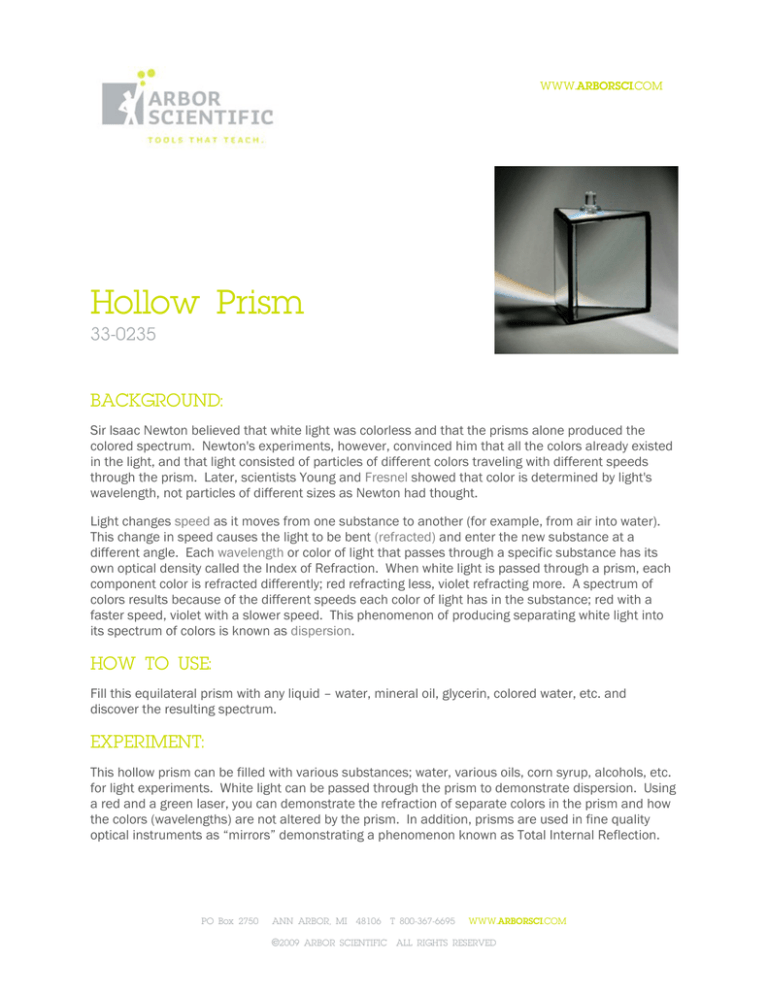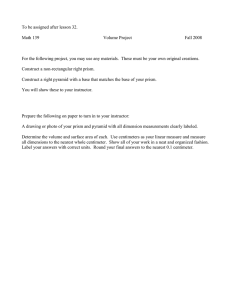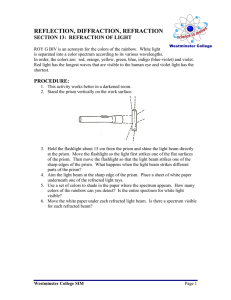
WWW.ARBORSCI.COM
Hollow Prism
33-0235
BACKGROUND:
Sir Isaac Newton believed that white light was colorless and that the prisms alone produced the
colored spectrum. Newton's experiments, however, convinced him that all the colors already existed
in the light, and that light consisted of particles of different colors traveling with different speeds
through the prism. Later, scientists Young and Fresnel showed that color is determined by light's
wavelength, not particles of different sizes as Newton had thought.
Light changes speed as it moves from one substance to another (for example, from air into water).
This change in speed causes the light to be bent (refracted) and enter the new substance at a
different angle. Each wavelength or color of light that passes through a specific substance has its
own optical density called the Index of Refraction. When white light is passed through a prism, each
component color is refracted differently; red refracting less, violet refracting more. A spectrum of
colors results because of the different speeds each color of light has in the substance; red with a
faster speed, violet with a slower speed. This phenomenon of producing separating white light into
its spectrum of colors is known as dispersion.
HOW TO USE:
Fill this equilateral prism with any liquid – water, mineral oil, glycerin, colored water, etc. and
discover the resulting spectrum.
EXPERIMENT:
This hollow prism can be filled with various substances; water, various oils, corn syrup, alcohols, etc.
for light experiments. White light can be passed through the prism to demonstrate dispersion. Using
a red and a green laser, you can demonstrate the refraction of separate colors in the prism and how
the colors (wavelengths) are not altered by the prism. In addition, prisms are used in fine quality
optical instruments as “mirrors” demonstrating a phenomenon known as Total Internal Reflection.
PO Box 2750
ANN ARBOR, MI 48106 T 800-367-6695
WWW.ARBORSCI.COM
©2009 ARBOR SCIENTIFIC ALL RIGHTS RESERVED
For example, if the prism is filled with water, a laser could easily demonstrate this concept. Using the
diagram as a guide, point the laser so that the light ray strikes the inside wall of the prism at an
angle greater than 42o (Critical Angle…The angle for which Total Internal Reflection will occur in
water). The light ray will not pass out of the prism, but reflect completely as if the surface was a
perfect mirror.
PO Box 2750
ANN ARBOR, MI 48106 T 800-367-6695
WWW.ARBORSCI.COM
©2009 ARBOR SCIENTIFIC ALL RIGHTS RESERVED





